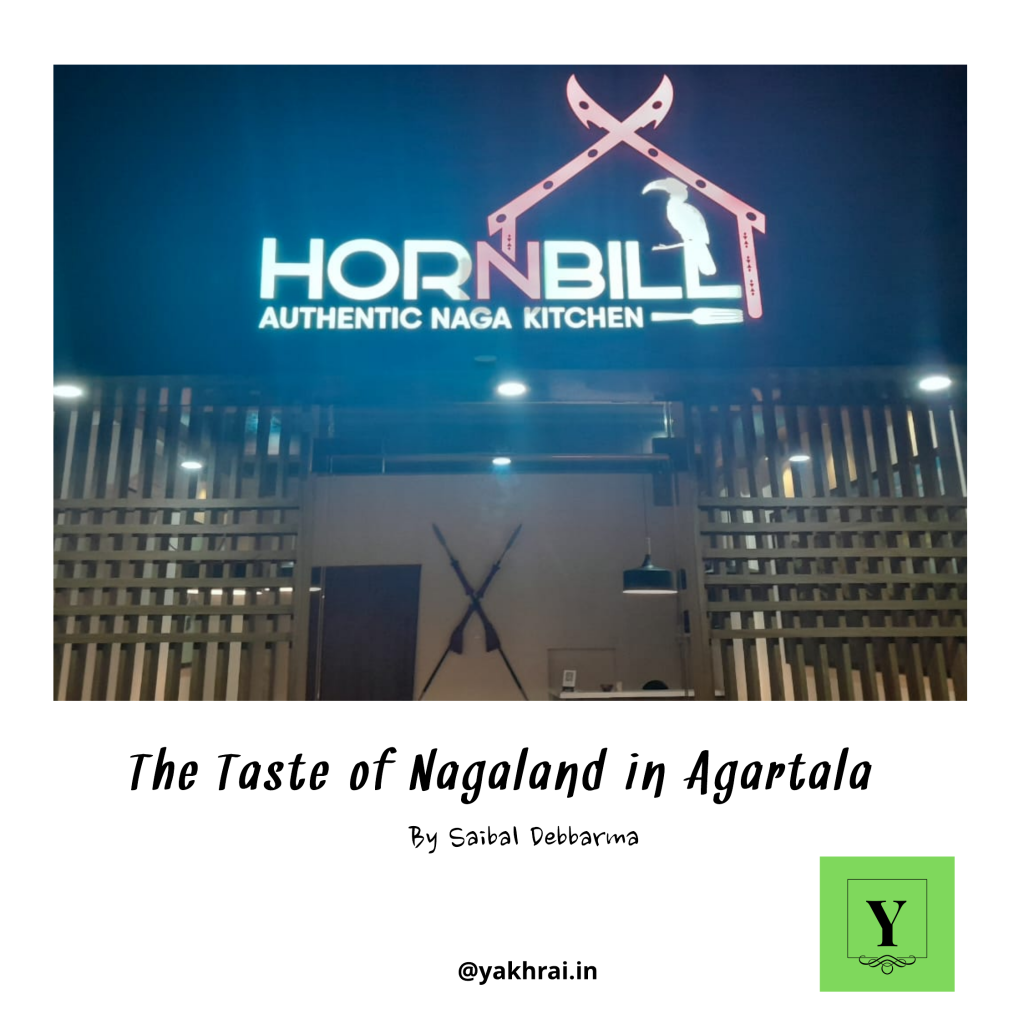By Saibal Debbarma
February 27, 2024
In a dark clandestine lane situated at the intersection between Banerjee Para and Colonel Mahim Thakur Chowmuhani Road, I happened to come across a billboard proclaiming ‘Hornbill: Authentic Naga Kitchen’. As I entered the premises of the restaurant, I was captivated by the distinctive smell of Naga spices used in Axone, amalgamated with the flavor of smoked pork. The cozy restaurant space was adorned with the famed Naga spears. The menu promised all the authentic cuisines available in a Naga household – Axone, Smoked Pork, Sinju, etc. I ordered a thali of Fresh Bastenga Pork and as I waited for the order, I became eager to learn about the idea behind the restaurant. The proprietor – Jewel Debbarma – willingly gave an interview to me where I asked him about the idea behind the venture of a Naga authentic kitchen in Agartala. I conversed with Mr. Jewel Debbarma while feasting upon the thali of authentic Naga Bastenga pork with rice, and this is the crux of what he said to me.

The billboard of the restaurant named, “Hornbill: Authentic Naga Kitchen”, at the intersection between Banerjee Para and Colonel Mahim Thakur Chowmuhani Road.
Mr. Jewel Debbarma, the proprietor of ‘Hornbill: Authentic Naga Kitchen,’ had worked with Vestige – a network marketing company, and established his business networking by working there. During his travels across the North-East region of India, he visited Nagaland and became infatuated with the culture and cuisine of Nagaland. He found that Naga food is well received even in the northern parts of India. He also observed that Agartala had a lack of Naga restaurants. The taste of most of the restaurants in Agartala catered to stereotypical cuisines, creating a bland commonality. He used the exotic view of Naga culture and cuisine as a marketing ploy to capture the niche market of the food industry in Agartala. He also wanted the restaurant to be a haven for the youths and students from other parts of North-East so that they may feel a little bit closer to home during their sojourn in Agartala.
Mr. Jewel Debbarma observed that the hospitality industry of Tripura is growing in leaps and bounds. So, he wanted to optimize the minimal resources available to him to maximum effect, and hence, for him, customer satisfaction and authenticity became the two prime concerns. So, he pledged not to compromise with the taste and offer his customers only the best. Most of the ingredients of Naga food are brought from Nagaland, including the Ghost pepper, famed as Bhut jolokia, and Axone, exclusively brought from Nagaland. The connectivity issues with Nagaland affect the costing and availability of resources, but Mr. Jewel Debbarma is optimistic that all the states of North-East will eventually get well connected with each other. I asked Mr. Jewel Debbarma what his message to the youth and his contemporaries was. He said that the youth of today should not sit and wait to get a government job but go out and grab whatever opportunity life presents before them. I finished my meal with great relish, and the story behind the restaurant inspired me to hope for the best for the future of North-East India.

I don’t think the title of your article matches the content lol. Just kidding, mainly because I had some doubts after reading the article.
awesome
What’s up, just wanted to mention, I enjoyed this blog post.
It was helpful. Keep on posting!
Hello i am kavin, its my first time to commenting anyplace, when i read this paragraph i thought i
could also make comment due to this sensible post.
Hi my loved one! I wish to say that this article is awesome, nice written and come
with approximately all significant infos. I’d like to peer extra posts
like this .
I couldn’t resist commenting